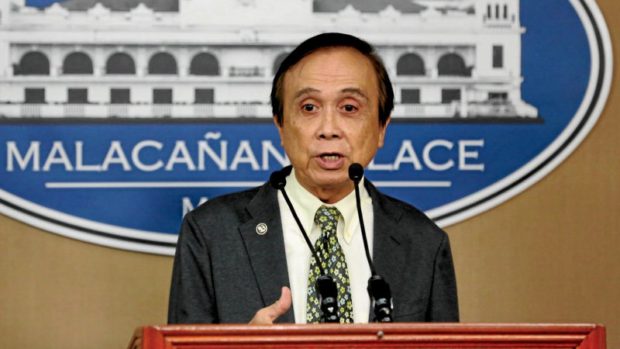Economic managers hopeful H2 economic growth will offset weak H1 GDP numbers

Socioeconomic Planning Secretary Ernesto M. Pernia. INQUIRER file photo / JOAN BONDOC
MANILA, Philippines–The country’s fiscal sector remains robust and will support faster economic growth in the second half of the year, despite a disappointing first semester gross domestic product brought about by the delayed passage of the national budget.
Thus said the chief economist of the Department of Finance who noted that the revenues of the national government rose by 0.4 percent of GDP in the first six months of 2019 “boosted mainly by tax revenues.”
According to Finance Undersecretary Gil Beltran, Philippine economic growth slowed to 5.5 percent in the first semester of 2019, which was lower than the 6.3 percent growth during the first semester of the previous year.
Because of this, Economic Planning Secretary Ernesto Pernia said the weaker first half performance of the economy meant that growth would have to average at least 6.5 percent over the third and fourth quarters of the year for the government to attain the lower end of its 6-7 percent GDP growth target for the year — something that he said would be challenging but attainable with the accelerated state spending that authorities are now implementing.
In his review of the Philippine economy’s performance in the first half of the year, Beltran noted that household consumption remained robust, equaling last year’s first half growth at 5.8 percent as consumer prices have trended down following quick response by President Rodrigo Duterte on the streamlining of food supplies.
“All other expenditure components declined: government consumption, from 12.6 percent to 7.1 percent; capital formation, from 14.9 percent to -0.1 percent and exports, from 12.6 percent to 5.0 percent as trade tensions rattled international value chains and dampened global investment,” he said.
“Private construction and services also maintained robust growth, providing hints of a quick recovery moving forward,” the DOF’s chief economist said.
He explained that the pickup in private construction from 6.5 percent to 23.1 percent cushioned the decline in public construction.
Private construction contributed 1.1 percentage point to the 5.5 percent growth in the first semester, tempering the negative contribution of public construction of minus 0.7 percentage point.
“Had the growth in public construction been at most zero, GDP growth could have reached 6 percent,” Beltran noted.
Services rose from 6.7 percent last year to 7 percent, with the financial sector paving the way, from 7.7 percent to 9.7 percent. Meanwhile, agriculture continued to be the laggard, almost not moving from its 0.7 percent semestral growth. /jpv
